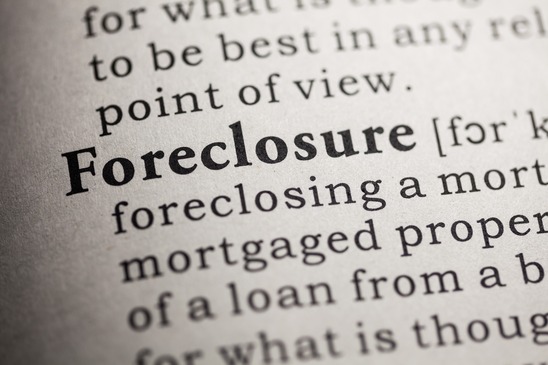Although it has been seven plus years it seems like there is no end in sight for the foreclosure crisis affecting New York. One question that is now frequently being asked, is whether or not lenders have filed their foreclosure lawsuits in a timely manner. There is uncertainty to both homeowners and lenders as to how to compute the statute of limitations in a foreclosure lawsuit. A recent appeal to the Appellate Division, Beneficial Homeowner Service Corp. v. Tovar Index No. 61092/2014 (NY: Supreme Court, Suffolk County 2014), will hopefully bring further clarity as to the calculation of the statute of limitations in foreclosure lawsuits.
In New York State, lenders have a limited amount of time to bring a foreclosure lawsuit against delinquent borrowers. New York’s Civil Practice Law and Rules (CPLR) § 212, requires that actions upon a “mortgage of real property” to be commenced within six years. This statute of limitations in a foreclosure lawsuit begins to run, according to the 2nd Department of the Appellate Division of the Supreme Court of the State of New York in the case Zinker v. Makler, 298 AD 2d 516 (NY Appellate Div., 2nd Dept. 2002), “six years from the due date for each unpaid installment or the time the mortgagee is entitled to demand full payment, or when the mortgage debt has been accelerated.” In other words, the bank has six years from the final maturity date of the mortgage or six years from the time the entire loan becomes due to bring a foreclosure lawsuit. Lenders will often “accelerate” the loan by sending a letter demanding full payment after certain conditions are met. Acceleration letters are usually sent a number of months after default by a borrower. Typically, the sending of an acceleration letter is the first step in a foreclosure lawsuit.
As the foreclosure crisis in New York continues year after year, there are three different classes of foreclosure plaintiffs that are at risk from a statute of limitations defense. First, are lenders who filed foreclosure lawsuits that were dismissed without prejudice because of some deficiency with their case. Second, there are lenders who filed foreclosure lawsuits and voluntarily withdrew their case because they were concerned regarding potential defects in their case. Finally, there are the potential plaintiffs who have not yet brought a foreclosure lawsuit but have accelerated the loan at issue. Once acceleration occurs, the statute of limitations clock starts ticking.
Foreclosure defense lawyers are paying closer attention to the amount of time between the acceleration of the mortgage and the filing date in a particular foreclosure action, to determine if the statute of limitations may have past. We do not have reliable statistics regarding New York State’s approximately 92,000 pending foreclosures in order to determine how many cases may be vulnerable to this defense. However, one trial court in Long Island has recently ruled that a residential mortgage foreclosure is time-barred (and other similar claims are being litigated).
In Beneficial Homeowner Service Corp. v. Tovar, the plaintiff accelerated the loan at issue in February of 2007. That acceleration triggered the clock for the statute of limitations in this matter. The defendant was not properly served with a summons and complaint and was able to stop a foreclosure sale of the property by filing a Chapter 13 bankruptcy petition. The defendant’s bankruptcy case was dismissed in July of 2009 and in January of 2010 the defendant brought a motion to dismiss the plaintiff’s action based upon improper service. After defendant’s motion to dismiss was granted, the plaintiff brought a motion to discontinue the foreclosure. According to a 1994 Appellate Division, Second Department, ruling, Fed. Nat’l Mtge. Ass’n v. Mebane, 208 AD 2d 892 (NY Appellate Div., 2nd Dept. 1994), even if a foreclosure action has been dismissed, the acceleration survives. So, in the instant matter, the statute of limitations clock was still running. It was not until February of 2014 that plaintiff re-filed their foreclosure complaint. According to the analysis of Justice Stephen Behan of the Supreme Court of the State of New York in Suffolk County, the plaintiff only had until October 3, 2013 to re-file the foreclosure complaint. Beneficial Homeowner Service Corp.’s complaint was dismissed with prejudice. At the present time, this case is being appealed.
The plaintiff has three arguments as to why the statute of limitations did not lapse.
- The defendant’s bankruptcy tolled the statute of limitations;
- Governor Cuomo’s Executive Order’s No.’s 52 & 81 tolled the statute of limitations, and
- The mandatory default notices sent by Plaintiff constitute a revocation of the previous acceleration and the statute was reset.
The trial court rejected all of the arguments above. While the first two arguments are clearly invalid based on Justice Behan’s reasoning, the third argument may have created an issue of fact that needs to be tried. To revoke the acceleration of a mortgage in New York, there must be “an affirmative act by the lender revoking its election to accelerate” EMC Mortgage Corp. v. Patella, 279 AD 2d 604 (NY: Appellate Div., 2nd Dept. 2001). In Tovar, Justice Behan flatly rejects the plaintiff’s argument that the default notices sent after they withdrew their foreclosure lawsuit were enough to revoke acceleration. We will be watching to see how the Appellate Division rules on this case. If the Second Department agrees with the plaintiff and overturns the trial court’s ruling, then foreclosure plaintiffs will be given an easy way to get more time to bring a foreclosure lawsuit (sending out default notices). This may have a significant impact on the ability of lenders to prosecute older foreclosure matters that were dismissed or withdrawn and could lengthen the foreclosure crisis well into the foreseeable future. However, if the Second Department agrees with Justice Behan’s ruling and finds for plaintiff, it will put pressure on lenders to settle with borrowers and modify the loans in these foreclosure cases instead of prosecuting a lawsuit that will be thrown out because the statute of limitations has expired.
While we wait for the Appellate Division of the Second Department to rule in the appeal of Beneficial Homeowner Service Corp. v. Tovar, we feel it is important to note that most homeowners really just want the an affordable loan modification in order to have the opportunity to keep their home. They would much rather have a mortgage they can afford then to litigate a foreclosure lawsuit. Lenders should also keep this in mind when decided whether or not to aggressively pursue a foreclosure action.
If you have any questions about foreclosure or the statute of limitations in foreclosure actions, please do not hesitate to call the Law Offices of David I. Pankin, P.C. at 888-529-9600.





